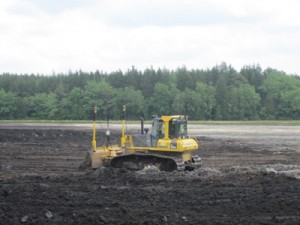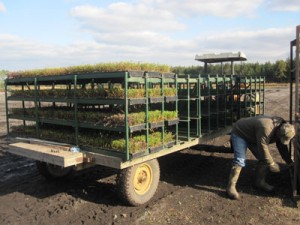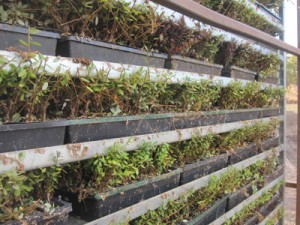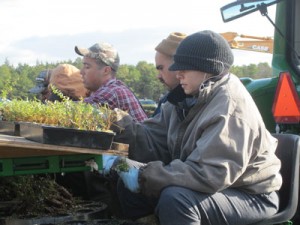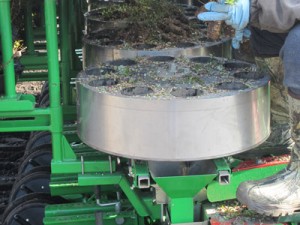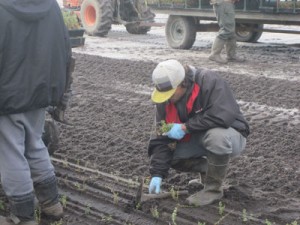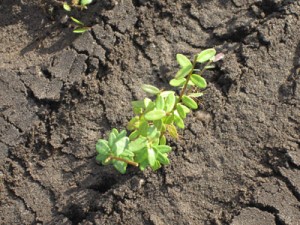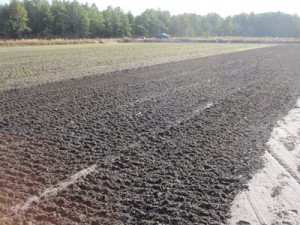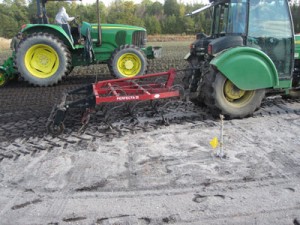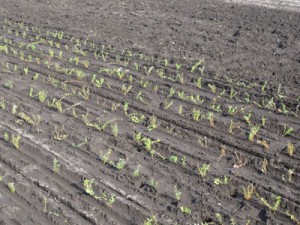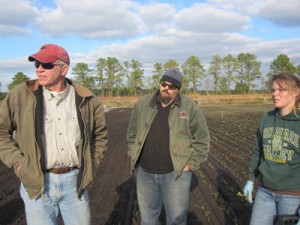This week, Pine Island Cranberry is trying something new: we’re attempting our first fall planting using rooted cuttings. Our planting team is out at High Bridge #1, planting the beds prepared by Joe Colon this past summer.
Previously planted with Early Blacks, we are moving to Crimson Queen, a variety chosen for higher yield potential. A major focus for Pine Island is increasing yield while lowering production costs, and renovation is a driving force behind our growth strategy: young bogs are redesigned for efficiency as well as yield.
The process remains the same as it does for our spring 2012 planting: the planter is loaded with the rooted cuttings, which drop onto a carousel:
And then other team members follow the planter to make sure the cuttings have been placed correctly.
But not everything is the same as it is in the spring. For one thing, the days are much shorter and the team cannot go at the same pace. In this particular case, it’s not too much of a worry: we’re planting this bog to see if it works. A big concern is timing and how the new plants will react to the winter flood: will they float when the water comes up, or will they stay in place? To address this concern, we are going to do a quick shallow overnight flood and remove the water the next morning. This will pack the soil around the new plants, and should anchor them well for the winter flood.
The soil will also stay wetter longer. “That can be ideal, but it can also be a nightmare,” says Tug Haines, who is fulfilling the same supervisory role that he did during our spring 2012 planting. “If a rainfall like we got on Tuesday happens in May, you can get a warmer, drier day and it won’t get sloppy. On the other hand, if it dries out too quickly you can kick up a lot of dust.” He also points out that we won’t need to water as much with this November weather. New PIICM supervisor Kylie Naylor adds: “Plants do tend to stick in machines when it’s cooler or raining; that can slow us down.”
As always, Pine Island is continually striving to improve internal processes and increase efficiency, and our team learned a lot last spring. The sprinklers have already been installed, and both our four-seater and six-seater planters used in tandem can speed up the process considerably by starting at opposite ends of the new bed and meeting in the middle. “We worked out the ideal system for that in April and can apply the lessons learned in November,” Tug says.
Thanks to our capable equipment team, our machines are also running smoothly due to meticulous care in the off-season. We’ve made some small improvements with regard to safety as well as spacing, which is often the most nerve-wracking part of the job. With this bed, the crew needs to make sure for every ten feet you have about thirteen to fourteen plants. It takes some planning, but our team is always ready.

